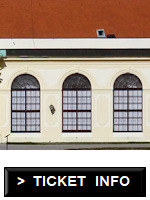Citrus trees once filled Belvedere’s Orangerie with colour. Now international art brightens the building.
- Built in the early 18th century
- Venue for some top special exhibitions
- Part of the Lower Belvedere ticketed area
- Book Lower Belvedere tickets* online
- See also:
Orangerie exhibitions
- Broncia Koller-Pinell (until September 8th, 2024): presents the works of this contemporary of Klimt but also reveals her important influence on other artists as well as her networking role in the artistic community
Recent past exhibitions
- The Belvedere: 300 Years a Venue for Art: given the 300th anniversary of the construction of the upper palace back in 1723, the exhibition explored the history of Belvedere in its widest sense: both as a place and an art institution.
- Joseph Rebell: revealed the genius of one of Europe’s great 19th-century landscape painters.
- Dalí – Freud: the influence of the father of psychoanalysis on Dalí’s creative output.
- Into the Night: art and culture in the context of cabarets and clubs.
- Johanna Kandl: the stories and issues behind the materials used in works of art
- Talking Heads: modern works of art examining the human face as motif, set in the context of Messerschmidt’s character head busts from the 1700s)
The Orangerie itself

(View from the Kammergarten)
The long Orangery (German: Orangerie) outbuilding at the bottom of Belvedere’s privy garden was an architectural marvel when first completed in 1714. It could house citrus trees all year round, which is quite a feat in a country than can have 35° in summer and -15° in winter.
The roof and south-facing façade on the original building were both removable, so visitors in summer gained the impression of a natural orchard with the trees growing out of the ground.
If the house guests of Prince Eugene weren’t impressed by the Baroque majesty of Belvedere’s palaces, they could at least be suitably blown away by the botanical majesty of the host’s plants. (And if that failed, he also had a private zoo).
Inside today’s Orangery is a modern museum gallery showing a temporary art exhibition.
This means you won’t actually find any orange trees: little remains of the original interior, and the Orangery was rebuilt after the death of Prince Eugene, anyway.
But…a windowed corridor runs down one side of the building. Standing at the main entrance end of this corridor gives you views across the privy gardens and out to Upper Belvedere palace (unless the blinds are down).
If you don’t look too carefully left or right, that view pretty much takes you back to the 18th century: it’s just gardens and façades with no cars, satellite dishes or pylons to tear you back into the 21st century.
Which is also why you need to stand at the main entrance end to see the view. If you go a little further down the corridor, then the A1 telecommunication tower pops up on the skyline (“intolerable” as Prince Eugene might have said, before dispatching a unit of cannon to bring down the eyesore).
For a nice view of the Orangery itself, simply go into the adjoining gardens, walk up to the first terrace and look back down.
Ticket & visitor tips
Any ticket giving access to Lower Belvedere palace includes entrance to the orangery and special exhibition.
(Booking service provided by Tiqets.com*, who I am an affiliate of)
Should you wish to see a historical Orangerie with actual citrus trees still inside, then try the one at Schönbrunn Palace. They do concerts there, too.
Getting to the orangery
Follow the directions for Lower Belvedere.
A glass corridor takes you from the end of one wing of the palace along to the Orangerie. You can also enter via the privy garden (which is itself only accessible, however, from inside Lower Belvedere).
Address: Rennweg 6, 1030 Vienna
